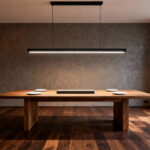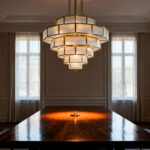Can we talk about something that drives me crazy? It’s the “rustic-in-a-box” living room. You know the one. Every piece of wood is the exact same shade of grayish-brown, the “distressing” looks like it was done by a robot, and the whole space feels less like a cozy cabin and more like a theme restaurant. It’s rustic as a costume, and it completely misses the point.
The real magic of a rustic space isn’t just about how it looks; it’s about how it feels. It’s about creating an unbreakable vibe of warmth and welcome that makes people want to kick off their shoes, grab a drink, and stay for a while. It’s the ultimate backdrop for making memories, whether you’re hosting an epic game night, a watch party for the championship, or just a lazy Sunday with the family. So let’s cut through the corporate-speak and talk about what actually matters when you’re putting together a rustic hangout that feels authentic, comfortable, and ready for a good time.
Laying the Rustic Groundwork: Essential Planning for Your Living Room (Part 1)
Before you even think about adding a single piece of furniture to your online cart, we need to talk strategy. This is the part everyone wants to skip, and it’s precisely why so many rooms end up feeling “off.” Getting this groundwork right is the difference between a space that feels accidentally cool and one that looks like you tried way too hard. Trust me, a little planning here saves you from a world of expensive headaches and buyer’s remorse later.
1. Define Your Specific Rustic Aesthetic: Farmhouse, Lodge, or Industrial Blend?
You know what people always ask me? “What is rustic, really?” The truth is, “rustic” is a huge umbrella. Trying to shop for “rustic” is like walking into a record store and asking for “music.” You’re going to get overwhelmed. You have to nail down your specific flavor first. Are you into the clean, bright lines of Modern Farmhouse? The massive, cozy-on-a-blizzard-day vibe of a Mountain Lodge? Or the edgy, cool-loft feel of an Industrial blend with exposed brick and metal?
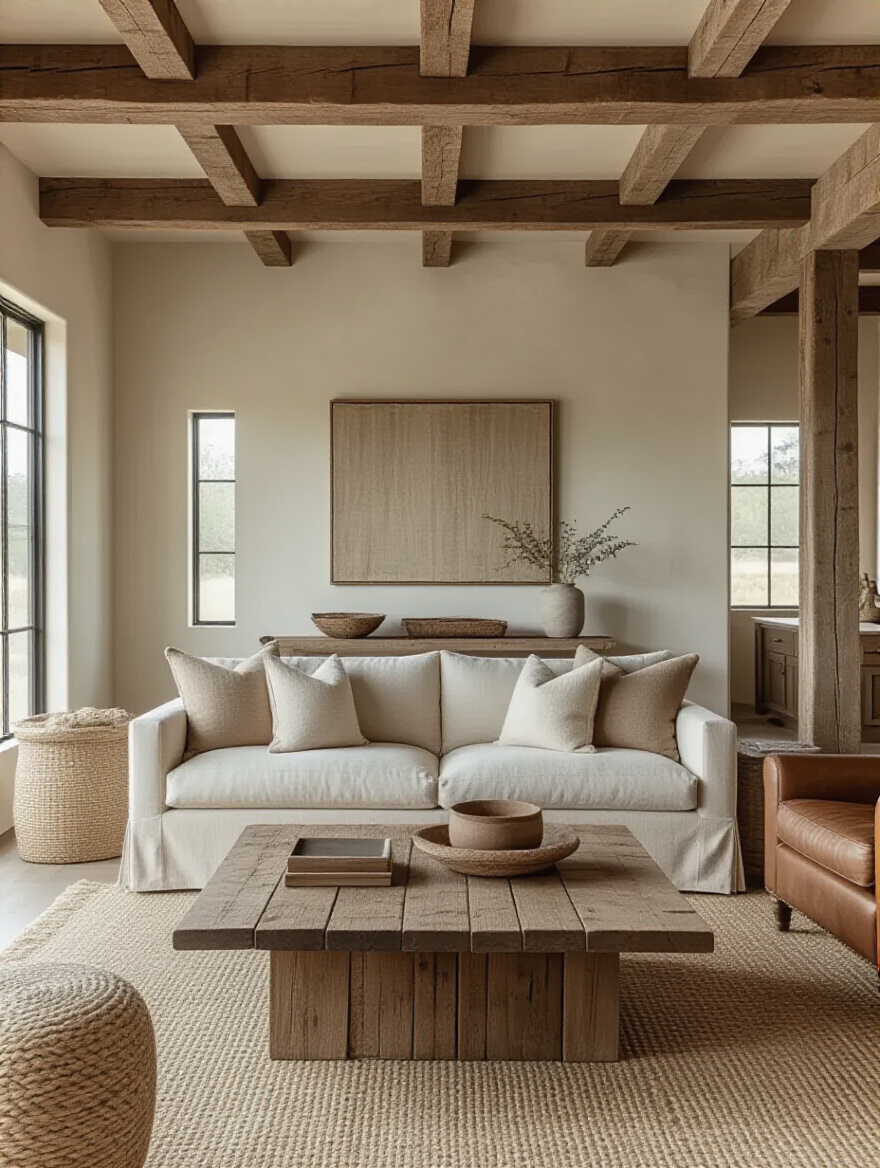
This isn’t just design snobbery. This is your filter. It’s your secret weapon against buying random “rustic” junk that doesn’t work together. Once you know you’re aiming for an Industrial Rustic look, you’ll instinctively walk past that whitewashed shiplap coffee table. It keeps you focused, saves you money, and makes every single decision easier from here on out. Make a Pinterest board—call it your “Vibe Bible”—and be ruthless about what you pin.
And that, right there, is the shortcut. It’s not about being a designer; it’s about making a decision upfront that guides every other choice.
2. Assess Your Living Room’s Existing Architecture and Natural Light for Best Fit
Picture this: you’re standing in your living room. Now, ignore the furniture. What’s the room itself telling you? Does it have gorgeous exposed beams? A killer brick fireplace? Giant windows that blast the space with afternoon light? You cannot fight the architecture of your house. I’ve seen people try, and it always ends in an expensive, awkward-looking mess. The trick is to work with it.
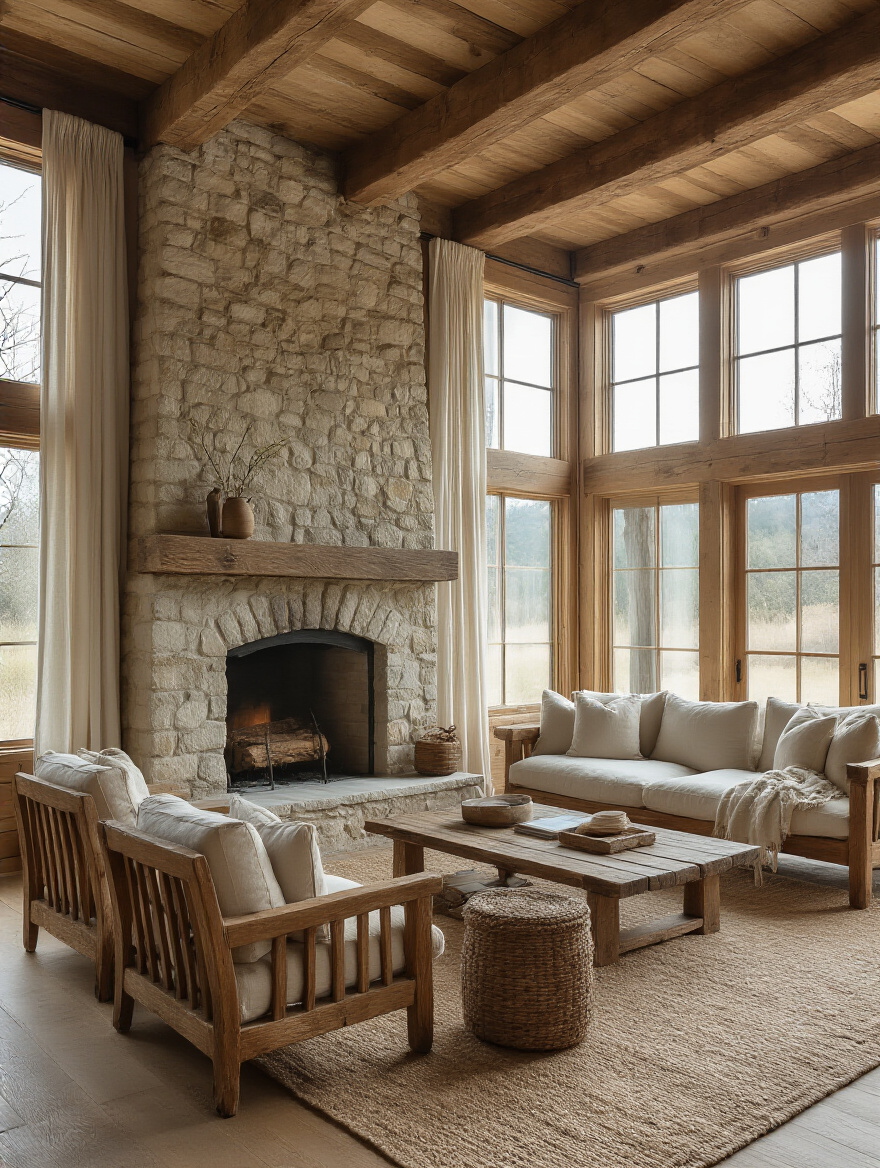
Those existing features are freebies! They’re the anchors for your whole design. That brick wall is begging for some raw, industrial-style shelving. Those big windows will make a lighter-toned reclaimed wood look absolutely stunning. Pay attention to how the light moves through the room during the day. That dark corner might be the perfect spot for a moody leather reading chair with its own dedicated lamp, not a place you try to force brightness into. Understanding your room’s bones is non-negotiable.
So before you buy anything, spend a day just watching your room. See where the light hits, where the shadows fall, and which built-in features deserve to be the star of the show.
3. Measure Your Space Accurately to Avoid Overcrowding with Large Pieces
I once had a client—super smart, successful guy—who fell in love with a massive, reclaimed-wood sectional online. He bought it without measuring. When it arrived, the delivery guys could barely pivot it into the room, and once they did, it consumed everything. It blocked the path to the sliding glass door and made the whole room feel like a claustrophobic cave. He lost a hefty chunk of change on the return shipping and restocking fee, all because he skipped a five-minute task.
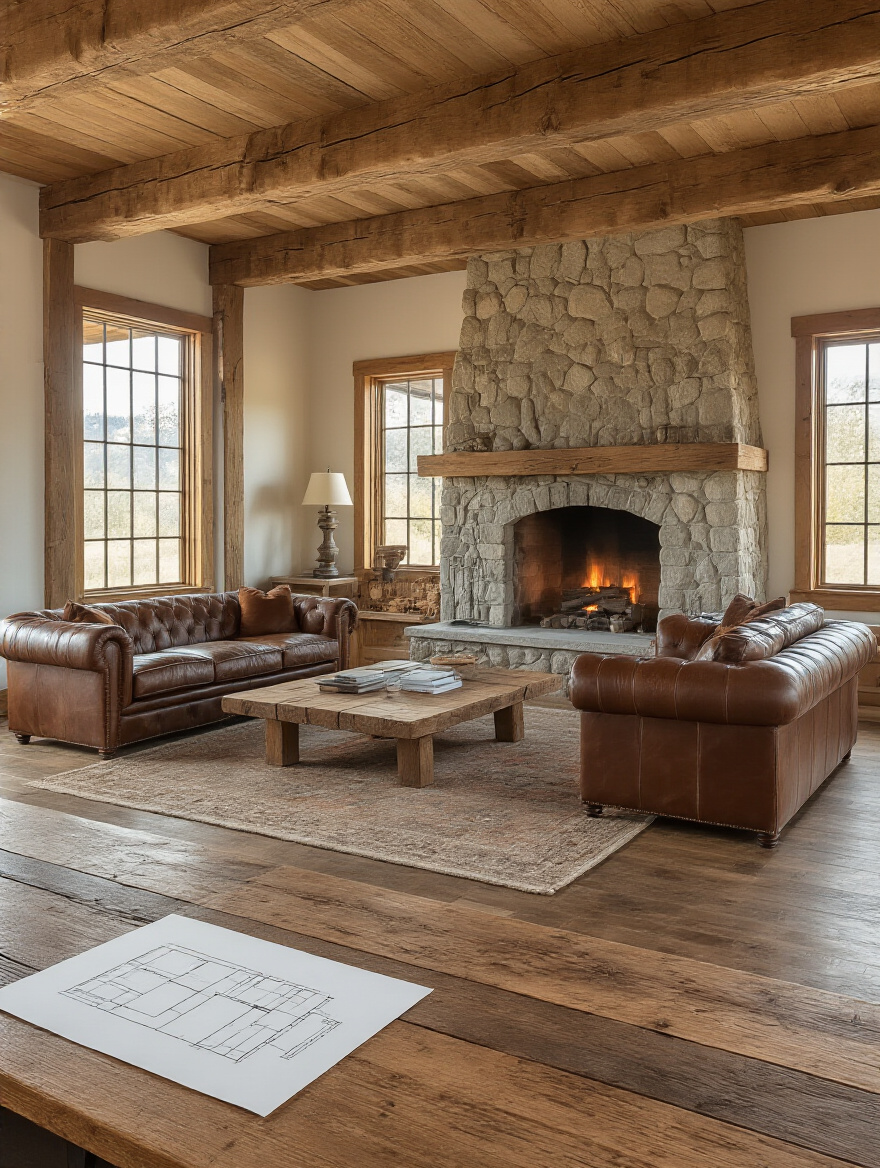
This is the most boring tip, and it’s also the most important. Rustic furniture is often big and visually heavy. You have to know your dimensions. And not just the length and width of the room—I’m talking about doorway heights, hallway turning radiuses, and the swing of every door. Get some blue painter’s tape and physically mark out the dimensions of the sofa or coffee table on your floor. Live with it for a day. It’s the ultimate shortcut to understanding how a piece will feel in your space.
You’ll know immediately if it’s too big. This little trick has saved my clients thousands of dollars and countless arguments.
4. Establish a Neutral Color Palette to Highlight Wood Tones and Natural Textures
Here’s a major misconception I want to debunk right now: neutral is NOT boring. In a rustic design, a neutral palette—think warm whites, soft grays, greige, earthy tans—is your secret weapon. It’s the sophisticated, quiet backdrop that lets all your amazing textures do the talking. When your walls are calm, the rich grain of your oak coffee table, the ruggedness of a stone accent, and the worn-in patina of a leather armchair suddenly become the superstars.
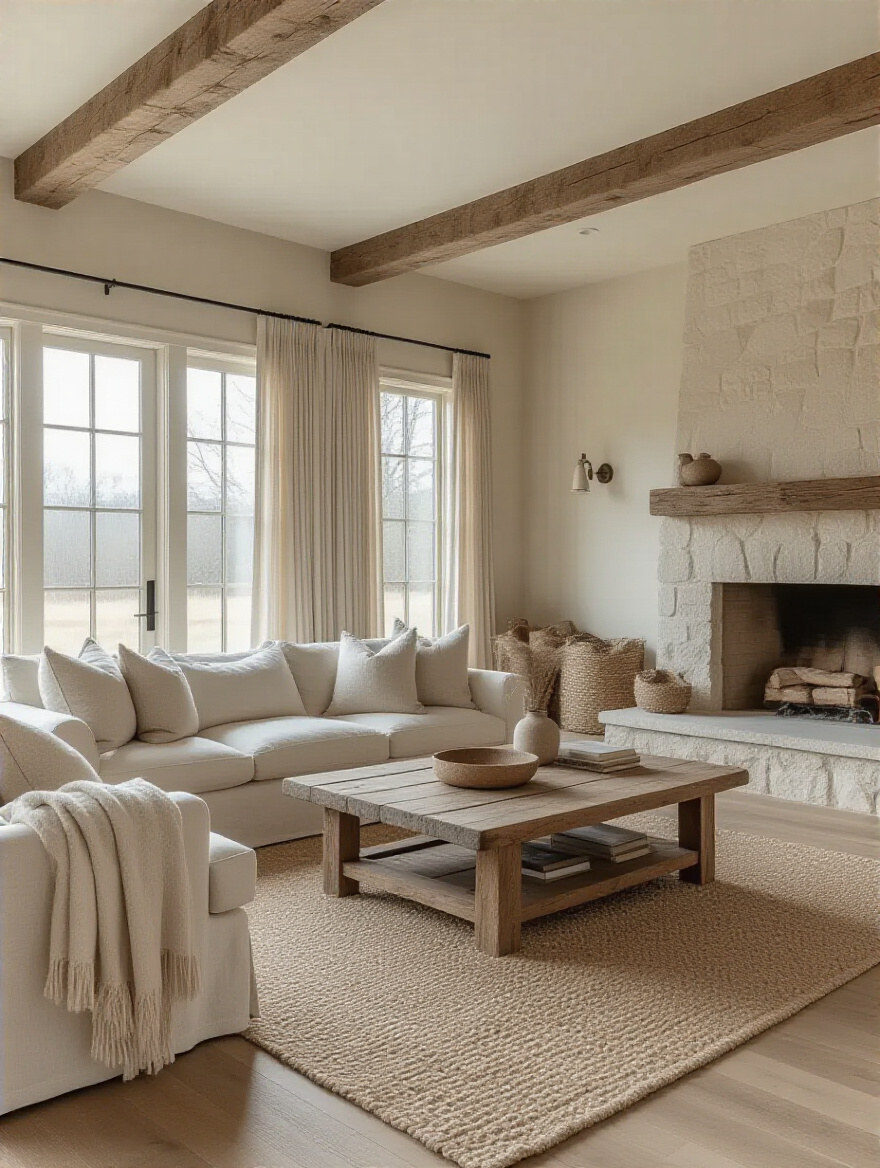
If you paint the walls a loud color, all those beautiful, expensive materials you invested in have to compete for attention. The result is visual chaos. A neutral canvas creates a serene, cohesive feeling that just screams “high-end.” And it allows you to easily swap out smaller decor items like pillows and throws when you want to change things up for the season.
So when you’re picking paint, grab swatches. Tape them to the wall. Look at them in the morning light, at noon, and at night. A gray that looks perfect in the store might look weirdly purple in your specific room. Trust the tape, not the tiny paint chip.
Now that we’ve got the blueprint, it’s time to talk about the fun stuff—the actual furniture. But we’re not just picking things that look good. We’re choosing pieces that are built to handle real life.
Laying the Rustic Groundwork: Essential Planning for Your Living Room (Part 2)
Okay, you’ve got a plan. You know your vibe, you’ve measured your space, and you’re not going to paint your walls neon green. Awesome. Now let’s talk about the philosophy behind the pieces you’re about to choose. This is where we separate the lasting, character-filled rooms from the ones that look dated in three years.
5. Prioritize Durability and Material Authenticity in All Furniture Selection
Can we just agree that “rustic-style” veneer is garbage? It’s basically a sticker of a wood pattern glued onto particleboard. The first time someone forgets a coaster or drags a laptop across it, it’s game over. That “distressed” look becomes just… destroyed. True rustic design is about embracing materials that are meant to take a beating and look even better for it. We’re talking solid wood, real top-grain leather, forged iron, and natural stone.
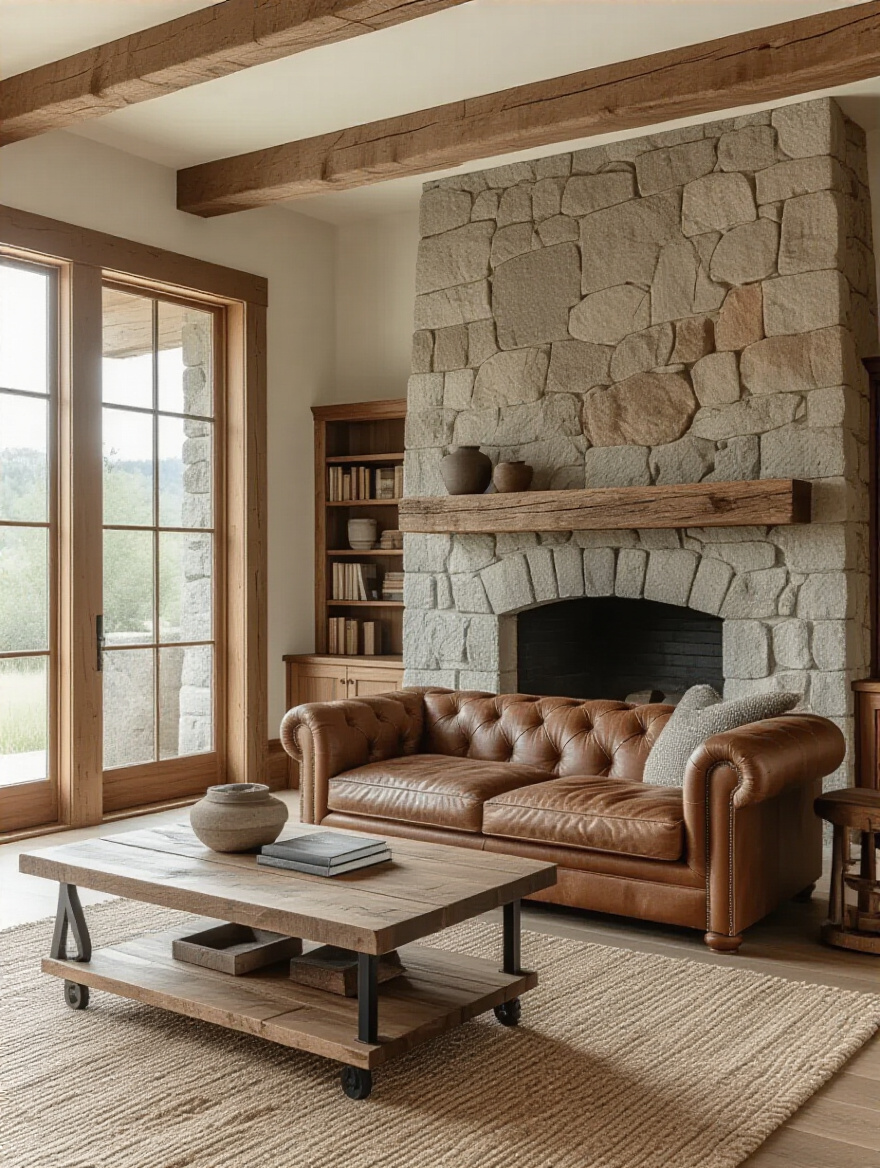
These materials have integrity. They have history. A solid wood coffee table doesn’t care if you put your feet up on it; that little scuff just adds to its story. Real leather develops a gorgeous patina over time, becoming softer and more inviting. This isn’t just about looks; it’s an investment. I’d rather see a client buy one amazing, authentic piece and live with less for a while than fill a room with a bunch of flimsy fakes that will end up in a landfill.
Here’s the shortcut: do the shake test. When you’re in a store, grab the corner of a table or chair and give it a good (but not crazy) shake. If it wobbles and creaks, walk away. Quality pieces are solid. Period.
6. Plan for Strategic Seating Arrangements to Encourage Coziness and Conversation
A living room is for living. It’s for people. And nothing kills a party faster than a seating arrangement that feels like a doctor’s waiting room. Pushing all your furniture against the walls is the cardinal sin of living room layout. It creates this weird, empty void in the middle—I call it the “dance floor of silence”—and forces people to shout at each other across the room.
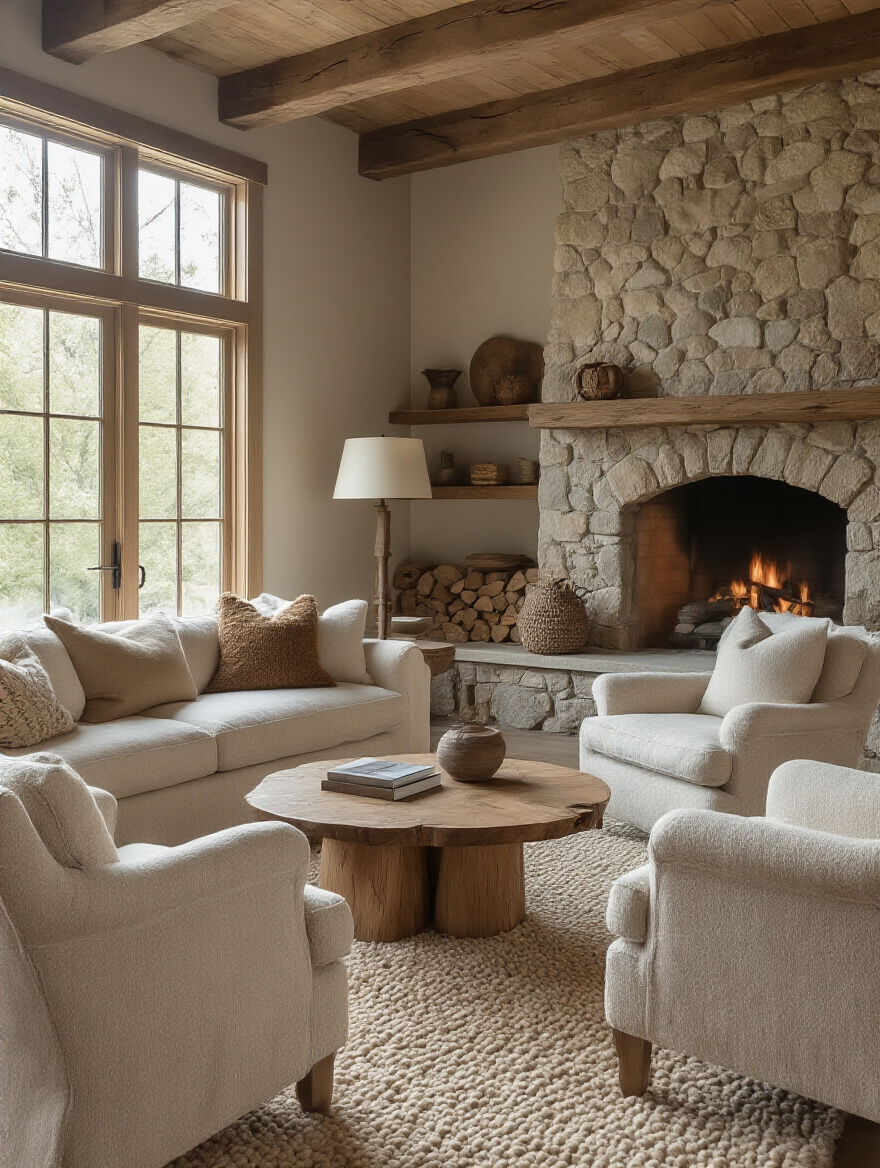
The goal is to create conversation zones. Pull your sofa and chairs away from the walls and arrange them to face each other. An L-shape or a U-shape around a central coffee table is perfect. You want people to be close enough to talk comfortably without yelling, which is usually about 3 to 8 feet apart. A large area rug is your best friend here—use it to visually anchor your main seating group and define the hangout space.
Think about flow, too. Make sure there are clear pathways for people to walk through without tripping over furniture or interrupting a conversation. A great social space is one where people can move around easily to grab a drink or join a different group. It should feel effortless.
With our strategic foundation firmly in place, let’s dive into the core components. These are the big-ticket items that will define the comfort and character of your room.
Curating Your Rustic Core: Selecting Key Furniture Pieces (Part 1)
Alright, this is the main event. Choosing the big, foundational pieces. These are the workhorses of your living room, the items that will see the most action. They set the tone, provide the comfort, and need to be tough enough to anchor your whole social hub. Let’s break it down.
7. Choose a Sturdy, Reclaimed Wood Coffee Table as Your Room’s Focal Point
Your coffee table is not just a place to put your coffee. It’s the command center of your living room. It’s where the pizza boxes go on movie night, where the board games are played, and where feet inevitably end up. In a rustic room, a solid, reclaimed wood coffee table is the undisputed champion. It’s got weight, character, and a story etched into its grain.
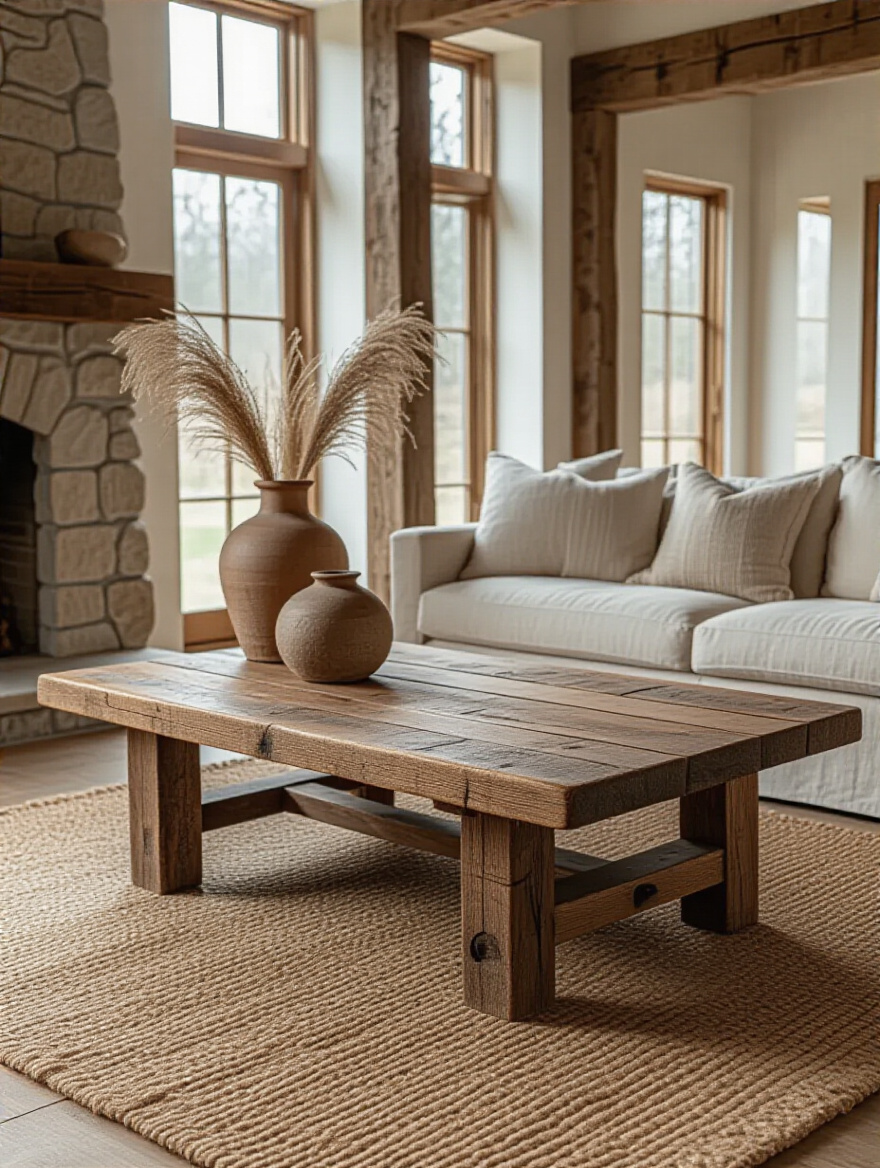
Don’t be afraid of imperfections. The dings, the knots, the old nail holes—that’s the good stuff. That’s what gives it soul and makes it different from the thousand identical tables at the big-box store. And from a practical standpoint, it’s incredibly forgiving. A new scratch or water ring just becomes part of its evolving character. A flimsy veneer table, on the other hand, is a constant source of stress.
Look for a piece with real heft. A table made from old barn wood or industrial timbers has a presence that immediately grounds the entire seating area. It says, “This room is solid. This room is real.”
8. Invest in Comfortable, Upholstered Sofas with Natural Fabric or Distressed Leather
Let’s be honest: a couch that looks cool but feels like a rock is a party killer. Your sofa is the heart of your hangout space, and its number one job is to be comfortable. In a rustic setting, that comfort is best delivered through natural materials. Think deep-seated sofas upholstered in durable linen or cotton canvas, or the holy grail: a buttery, distressed leather sofa.
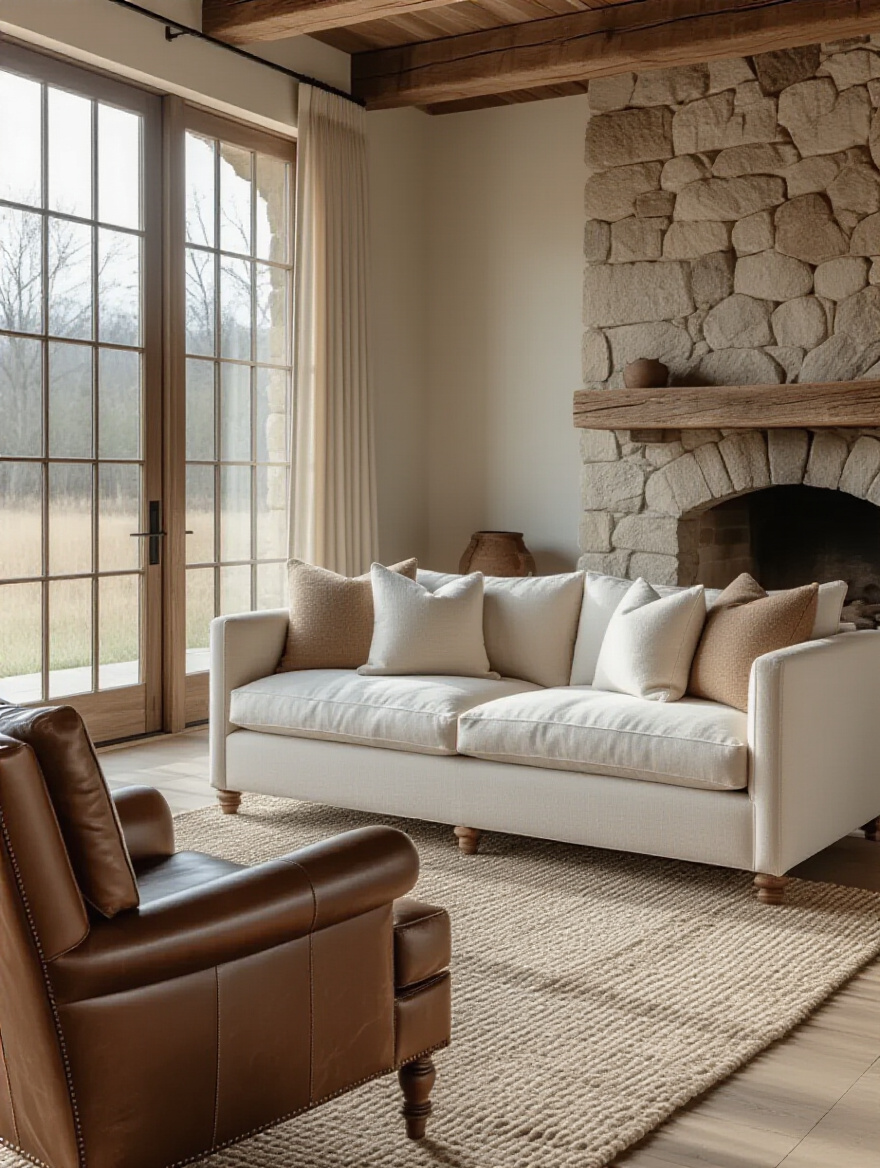
A good leather sofa is like a great bottle of wine—it only gets better with age. Every scuff and mark tells a story. It’s also incredibly durable and easy to clean, which is a huge win for any social space. If leather’s not your thing, a high-quality natural fabric offers a softer, cozier vibe. The key is to avoid cheap synthetics that look and feel plasticky and will start pilling or wearing out in a couple of years.
Look, you’re going to spend more time on your sofa than almost any other piece of furniture. Invest in a good one with a solid, kiln-dried hardwood frame and quality cushions. It’s the difference between a couch that lasts for a decade and one you’ll hate in two years.
9. Select Solid Wood or Forged Iron End Tables for Functional and Aesthetic Support
End tables are the unsung heroes of the living room. They’re the dedicated landing pads for drinks, remote controls, phones, and lamps. Without them, your coffee table becomes a cluttered mess. In a rustic design, this is another opportunity to bring in authentic, hard-working materials like solid wood and hand-forged iron.
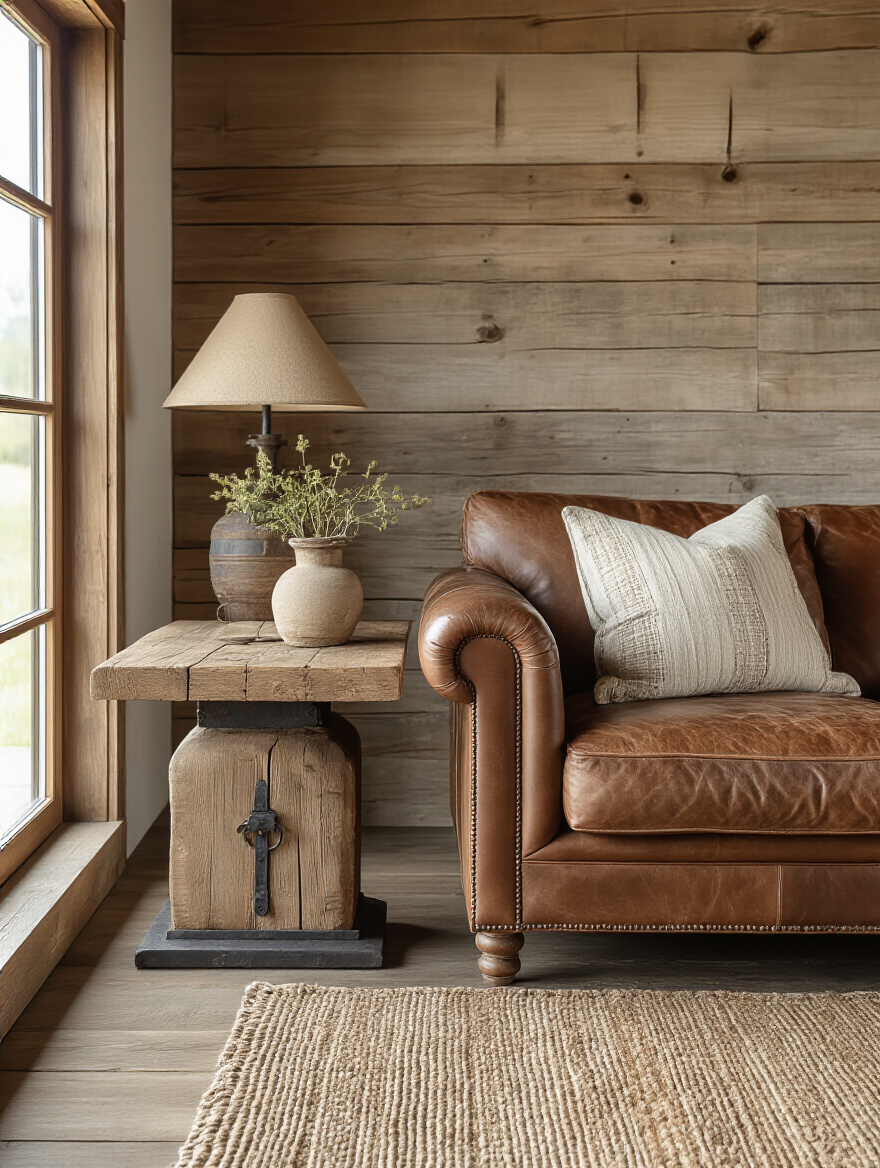
Don’t feel like everything has to match perfectly. In fact, a rustic room looks better when it doesn’t. Pairing a heavy wood coffee table with sleek iron-frame end tables can add fantastic visual contrast. A table made from a slice of a tree trunk (a “live edge” piece) can be a stunning, sculptural element all on its own.
Functionally, make sure your end tables are the right height—they should be at or just below the height of your sofa’s armrest. This makes them easy and comfortable to use. It’s a small detail that makes a huge difference in how the room actually functions day-to-day.
10. Integrate a Weathered Wood TV Console or Media Cabinet for Seamless Entertainment
Here’s where my worlds of AV and design collide. Your giant, beautiful flat-screen TV is a sleek piece of modern technology. Just plopping it into a rustic room can feel jarring. The solution? A weathered wood TV console that bridges the gap between old and new. It grounds the technology in a natural, textured frame, making it feel intentional rather than an afterthought.

The biggest mistake people make is buying a console that’s too small. Your media cabinet should always be noticeably wider than your television. It creates a more stable, balanced visual anchor. A dinky stand under a big TV looks top-heavy and cheap. A substantial wood console not only looks better but also gives you crucial storage for game consoles, soundbars, and all the associated cable clutter.
Speaking of which, look for a console with good cable management! Holes in the back panel are a must for hiding that rat’s nest of wires. A clean setup is key to making your entertainment zone feel integrated and serene, not chaotic.
We’ve got the main players in place. Now let’s add the supporting cast—the pieces that bring extra personality and functionality to the space.
Curating Your Rustic Core: Selecting Key Furniture Pieces (Part 2)
With the sofa and tables anchoring the room, it’s time to layer in the pieces that add depth, character, and those crucial spots for personal comfort. These are the elements that transform a well-arranged room into a truly inviting home.
11. Add a Statement Rustic Armchair or Recliner for Individual Comfort and Character
Every great living room needs a “best seat in the house.” This is that one spot—the statement armchair or recliner—that’s all about individual comfort. It’s the perfect place to curl up with a book, or for that one friend who always claims their throne during game night. This piece is your chance to inject a major dose of personality.
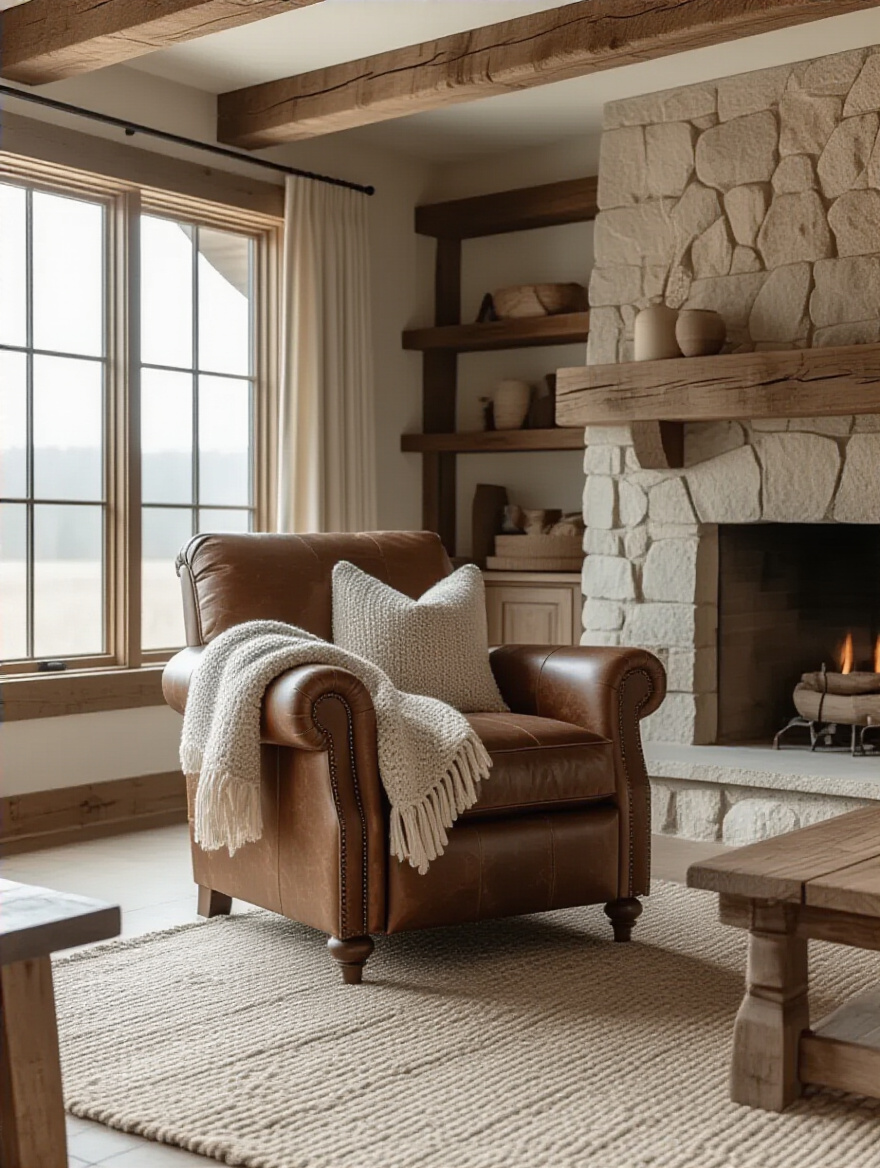
Think of a worn-in leather club chair with brass nailhead trim, or a cozy armchair upholstered in a rugged wool plaid. It doesn’t need to match the sofa. In fact, it’s better if it doesn’t. This is a standalone star. A high-quality rustic armchair acts as functional art, adding a sculptural element and a new texture to your design palette.
If you go for a recliner, forget the puffy, overstuffed monstrosities of the past. There are amazing options now that look like sleek, stylish armchairs but hide their reclining function. It gives you that premium comfort without sacrificing an ounce of style.
12. Explore Open Shelving Units Made from Barnwood or Industrial Pipe for Display
Closed cabinets can feel heavy and formal. Open shelving, especially when crafted from reclaimed barnwood planks and industrial steel pipes, is the perfect rustic solution. It’s functional, visually light, and gives you a dedicated stage to show off your personality. This is where you display your favorite books, interesting objects you’ve collected, family photos, and maybe a few plants.
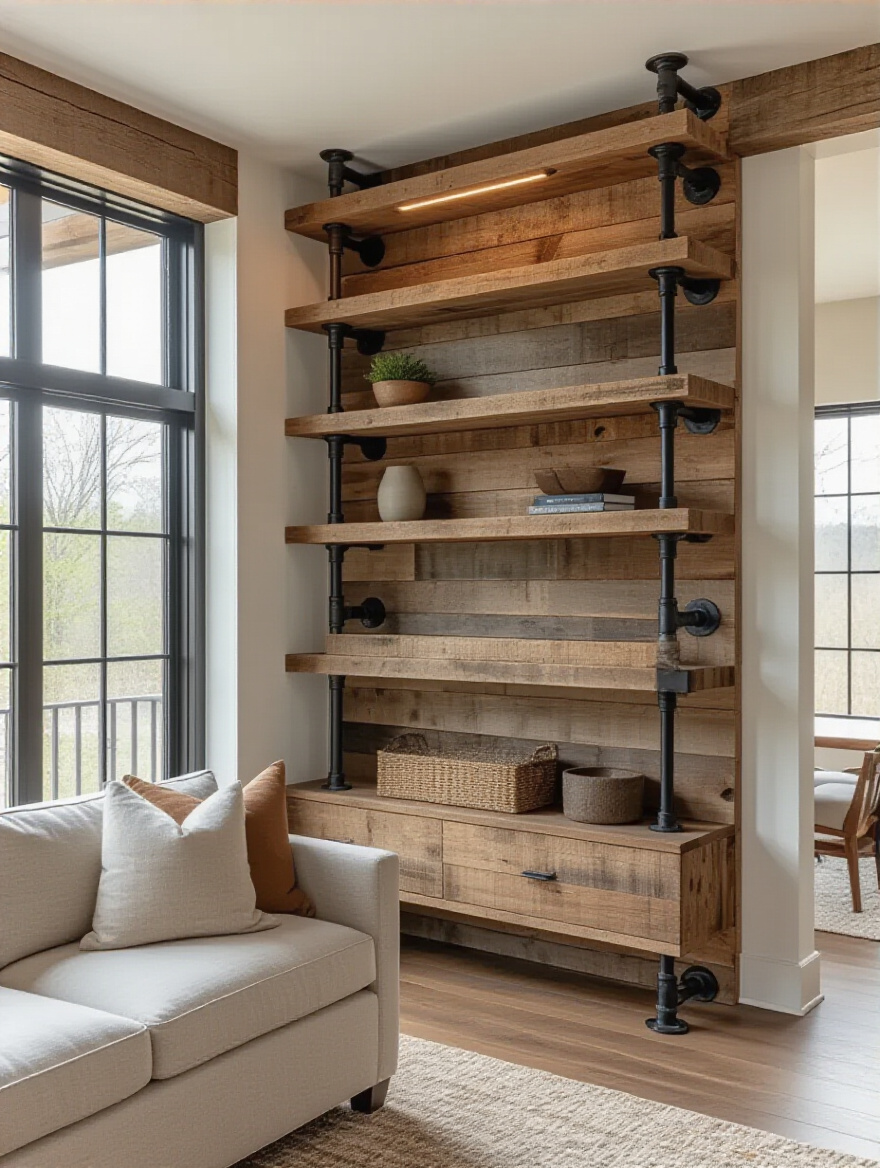
The key to making open shelving look amazing—and not like a cluttered mess—is curation. Don’t just cram stuff onto the shelves. Mix it up. Vary the height and shape of the objects. Use the “rule of three” (grouping items in odd numbers), and leave some empty space. That “negative space” is what makes the things you do display really pop.
Building your own pipe and wood shelves is a classic DIY project that gives you a completely custom, high-end look for a fraction of the cost. It’s a fantastic way to add a ton of authentic industrial-rustic character to a blank wall.
13. Don’t Overlook Essential Rustic Storage: Baskets, Trunks, and Blanket Chests
Real life is messy. You’ve got blankets, remote controls, kids’ toys, magazines… the list goes on. Great rustic storage is what keeps that chaos from taking over your beautifully designed room. And the best part? The storage solutions themselves are key decorative elements. We’re talking about big, beautiful woven baskets, vintage steamer trunks, and solid wood blanket chests.

A large basket next to an armchair is the perfect home for extra throws. A vintage trunk can double as your coffee table, providing a massive amount of hidden storage inside for board games or photo albums. A blanket chest at the foot of a sofa adds another layer of texture and a handy surface while hiding away all your cozy essentials.
This is the shortcut to the “panic clean.” When you know guests are coming over in 15 minutes, you can do a quick sweep of the room and hide all the clutter in these beautiful, functional pieces. Your room looks tidy and your secret is safe.
The furniture is in place, but we’re not done yet. Now it’s time for the final layer—the styling and details that elevate the entire space from “nice” to “unforgettable.”
Elevating the Rustic Vibe: Styling, Accents, and Longevity (Part 1)
This is where the magic really happens. The furniture forms the skeleton, but the textiles, lighting, and natural accents are what give your rustic room its soul. These are the details that create that irresistible cozy vibe and make a space feel complete.
14. Layer with Organic Textiles: Wool Throws, Faux Fur Rugs, and Linen Cushions
A rustic room without texture is a sad, flat room. Layering different textiles is the fastest way to add warmth, depth, and a serious dose of comfort. Think about how things feel to the touch. You want a mix of rough and soft, smooth and chunky. Drape a thick, hand-knit wool throw over the arm of your leather sofa. Toss a couple of linen cushions next to it. Put a faux fur or sheepskin rug on the floor for an unbelievably luxurious feeling underfoot.
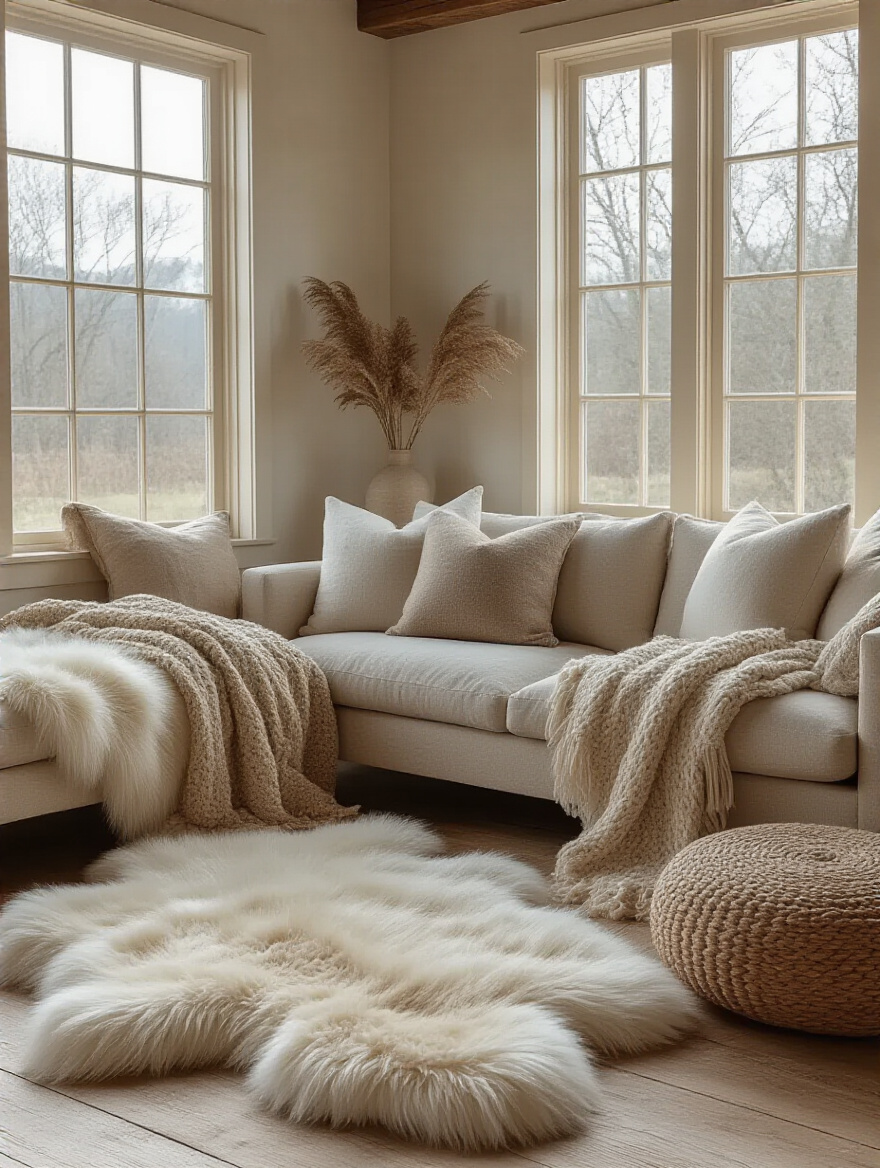
This is what makes a room feel lived-in and inviting. It’s a visual cue that says, “Come on in, get comfortable.” It breaks up the large surfaces of the furniture and wood, adding softness and sound absorption, which makes the room feel quieter and more serene.
Don’t be afraid to mix patterns, as long as you stick within your neutral color palette. A subtle stripe on a pillow or a geometric weave in a rug can add interest without being overwhelming.
15. Incorporate Natural Elements: Stone, Antlers, and Live Edge Decor for Authenticity
To push your rustic design into truly authentic territory, you need to bring the outdoors in—literally. This is about incorporating raw, unprocessed natural elements that feel found rather than manufactured. A stack of smooth river stones on a shelf, a cluster of birch logs by the fireplace (even if you don’t use it), or a set of ethically sourced antlers mounted as sculptural art on the wall.
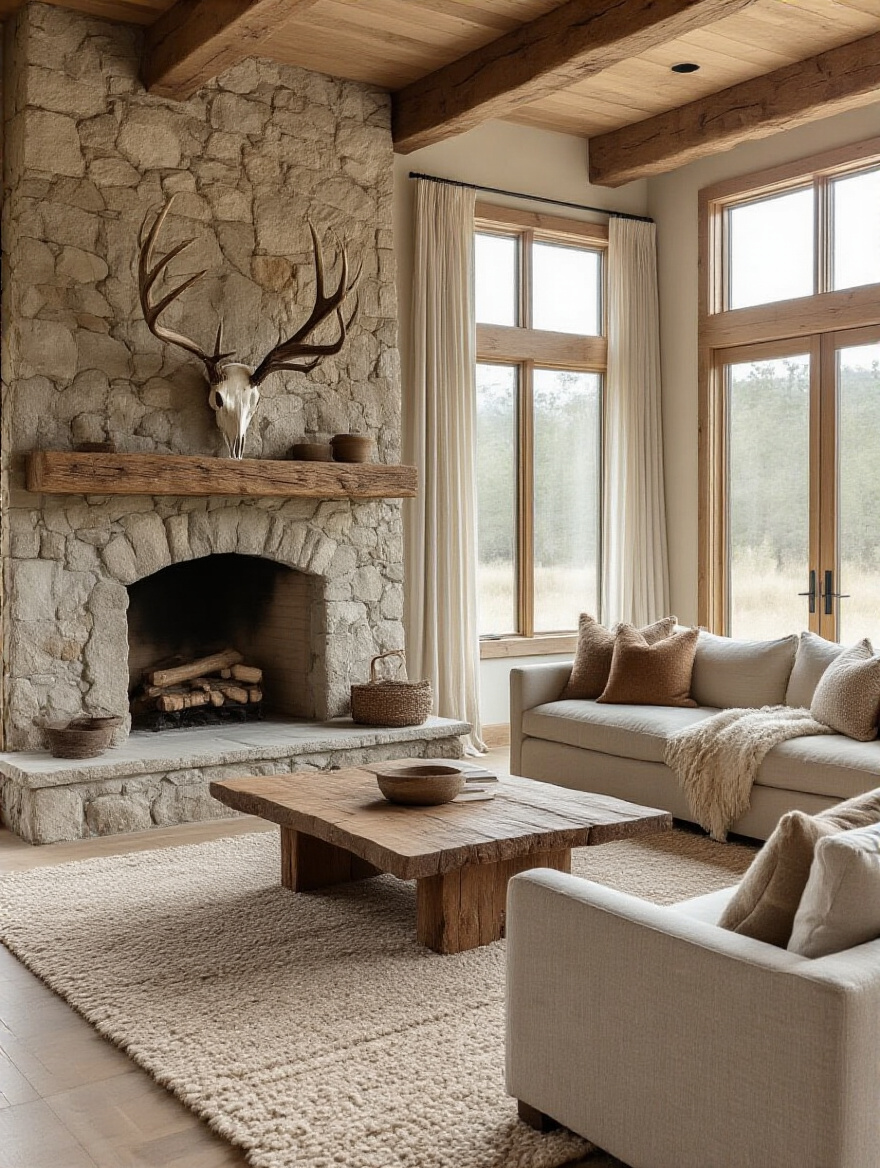
Live-edge wood is another huge one. A mantelpiece, a small shelf, or even a cutting board made from a slab of wood that keeps the natural edge of the tree adds a beautiful, organic line to a room full of straight edges. These pieces are unique by nature; no two are ever the same.
These are the elements that provide a direct connection to nature. They ground the space and keep it from feeling too sterile or polished, reminding you of the raw beauty that is the source of all rustic inspiration.
16. Select Earthy-Toned Rugs with Subtle Patterns to Ground Your Seating Area
I said it before, and I’ll say it again: a rug is not optional. It is the anchor for your entire seating area. Choosing the right one is critical. In a rustic room, you want to stick with earthy tones—think of the colors you’d find on a walk in the woods: deep browns, mossy greens, slate grays, and warm terracotta.
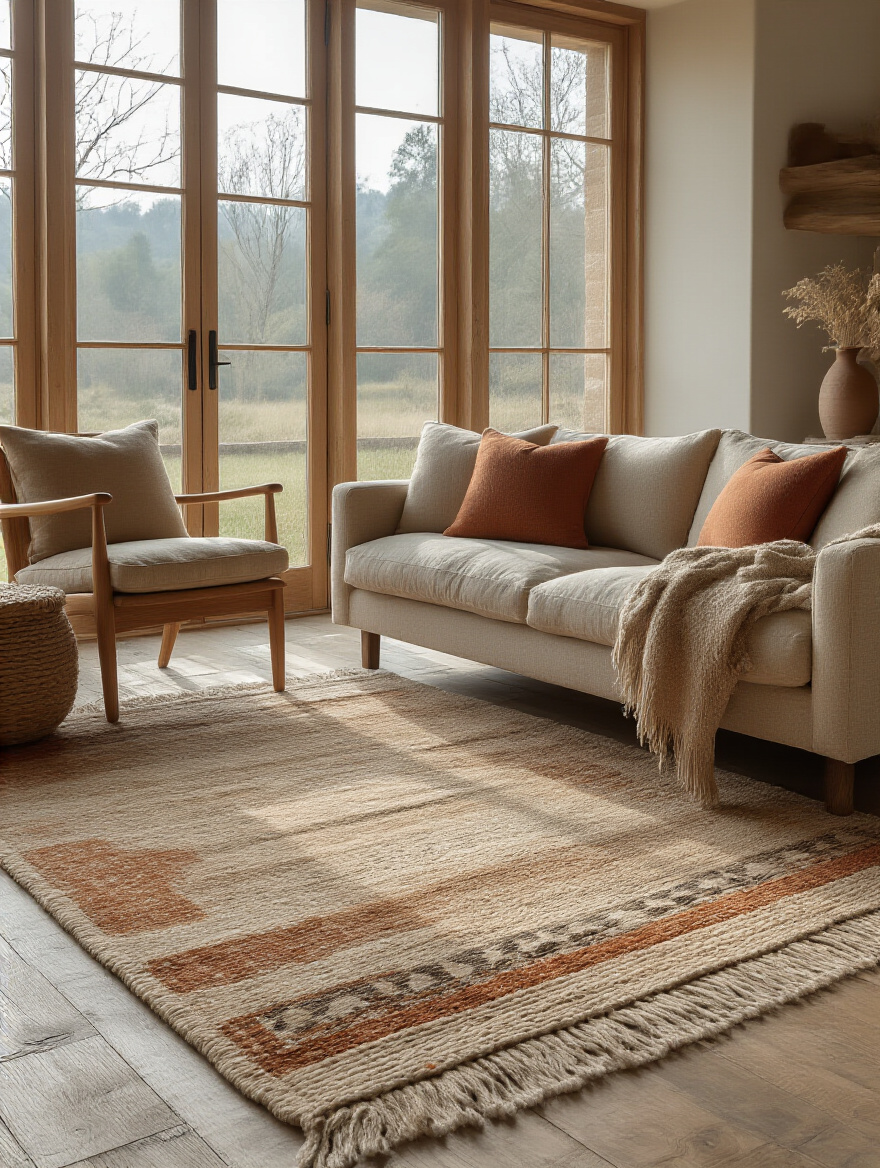
A rug with a subtle, low-contrast pattern can add a layer of sophistication and hide the occasional crumb or spill, which is a bonus for any social space. A vintage-inspired geometric or a faded tribal pattern works beautifully. Materials like wool and jute are perfect choices; they are durable, feel great underfoot, and add yet another layer of natural texture.
The biggest mistake I see is getting a rug that’s too small. It makes the room look cheap and disconnected. You want a rug that’s large enough for at least the front legs of all your main seating pieces to rest comfortably on it. This visually pulls everything together into one cohesive, inviting zone.
17. Optimize Lighting with Lanterns, Edison Bulbs, and Wrought Iron Fixtures
Lighting is everything. It sets the mood, plain and simple. Harsh, overhead lighting can kill a vibe instantly. To nail the rustic atmosphere, you need layered, warm lighting. Start with a statement fixture, like a big wrought iron chandelier over your main seating area. Then, layer in other sources. Wall sconces, table lamps, and floor lamps are all your friends.
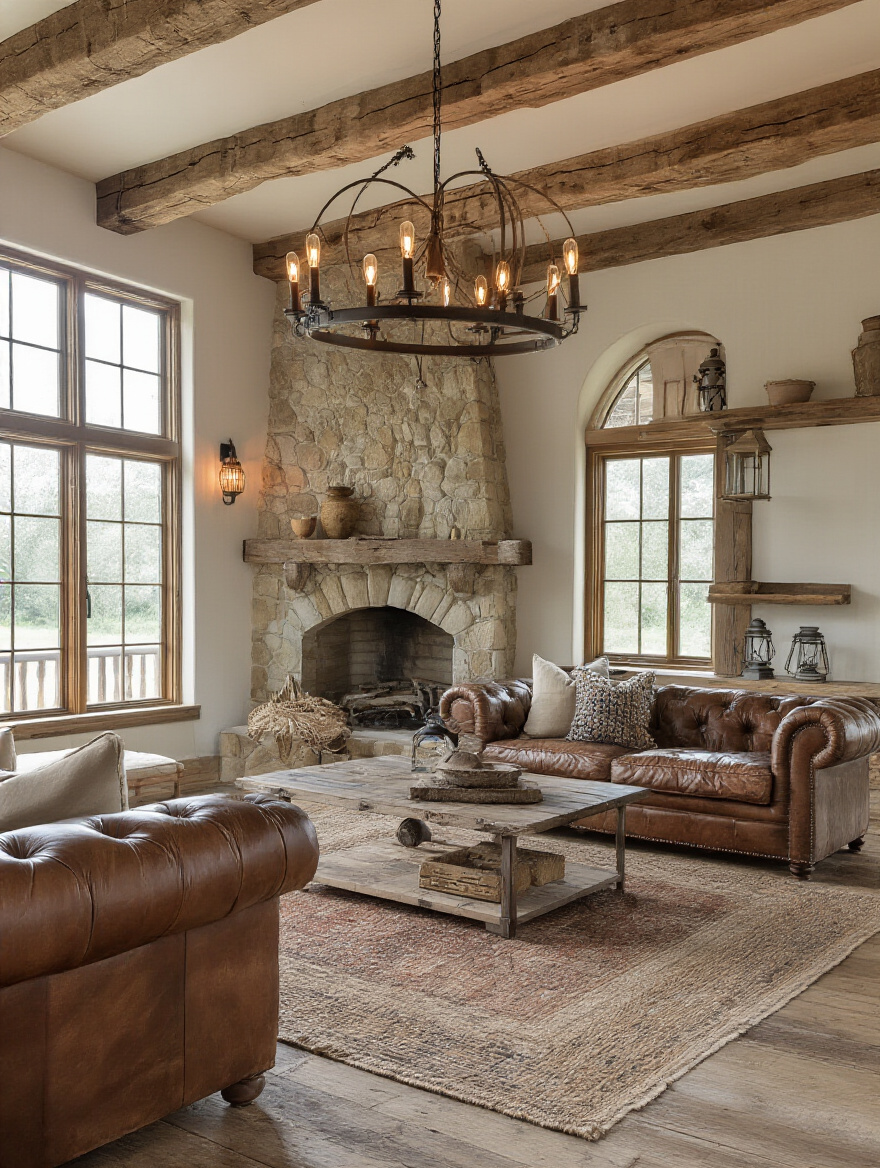
The bulbs you choose are just as important as the fixtures. Edison-style filament bulbs are a perfect fit for the rustic aesthetic. They cast a warm, amber glow that is instantly cozy and nostalgic. And put everything—I repeat, everything—on a dimmer switch. This is the single best upgrade you can make to your living room. It gives you complete control over the mood, allowing you to go from bright and functional for game night to low and intimate for a movie.
Decorative lanterns with battery-powered LED candles are another fantastic trick. You can place them on a mantel or a side table for a soft, flickering accent light that adds a touch of rustic romance without any fire hazard.
You’ve built a beautiful, inviting space. Now, let’s make sure it stays that way. A little bit of care goes a long way in protecting your investment and keeping your furniture looking great for decades.
Elevating the Rustic Vibe: Styling, Accents, and Longevity (Part 2)
Your dream room is complete. High five! But the work isn’t totally over. Rustic furniture is built tough, but it’s not invincible. A little bit of smart maintenance will ensure these pieces age beautifully into future heirlooms instead of just getting old and worn out.
18. Learn Proper Cleaning and Maintenance Techniques for Wood and Leather Surfaces
Authentic materials need authentic care. Forget the generic, all-purpose sprays filled with harsh chemicals—they will strip the finish off your wood and dry out your leather in a heartbeat. For wood, your best tool is a simple microfiber cloth for regular dusting. For a deeper clean or polish, use a product made specifically for wood, like a quality wax or oil, every few months to keep it from drying out.
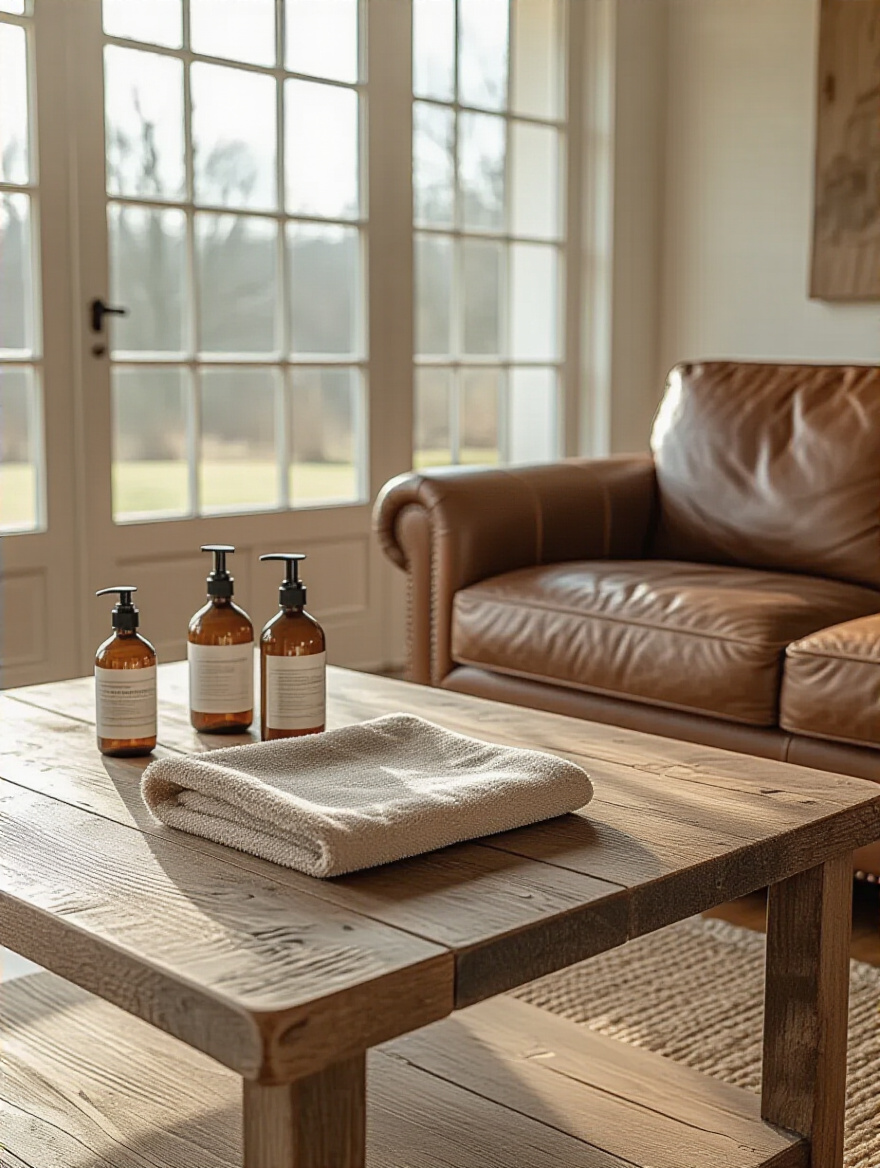
Leather is like skin; it needs to be cleaned and moisturized. Wipe it down with a damp cloth periodically, and every 6-12 months, treat it with a good leather conditioner. This is what prevents cracking and keeps it feeling soft and supple. It takes 20 minutes and will literally add years to the life of your sofa or armchair.
I know a couple who invested in a gorgeous, top-grain leather sectional. They never conditioned it. Within five years, the seats exposed to the afternoon sun were cracked and faded, a completely avoidable tragedy. Don’t let this be you!
19. Regularly Inspect and Tighten All Rustic Furniture Pieces to Prevent Loosening
Solid wood furniture breathes. It expands and contracts with changes in temperature and humidity. Over time, this natural movement can cause screws and bolts to loosen up. That little wobble in your dining chair isn’t just annoying; it’s a warning sign. It puts stress on the joints and can lead to a full-blown structural failure down the road.
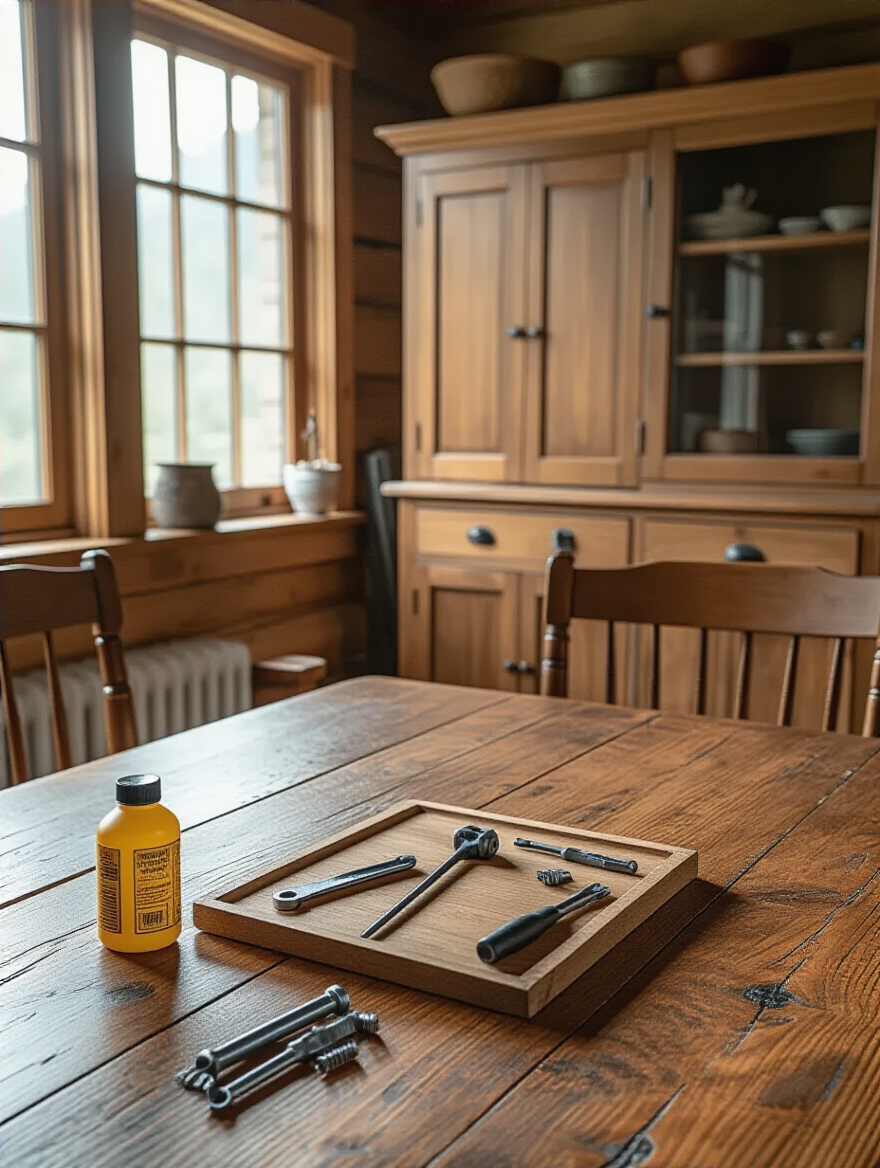
Twice a year—maybe when you change the clocks for daylight saving time—make it a ritual to go around with a screwdriver and a set of Allen wrenches and check all your furniture. Gently give everything a wiggle. If you feel any play, find the culprit and tighten it until it’s snug. Be careful not to overtighten and strip the screw, but just get it firm.
This is a five-minute job that will prevent major headaches. It keeps your furniture feeling solid and safe for you and your guests and dramatically extends its life. It’s the simplest and most effective way to protect the beautiful, sturdy furniture you’ve invested in.
Conclusion
So there you have it. Creating a truly killer rustic living room has nothing to do with buying a matching set from a catalog and everything to do with being thoughtful. It’s about choosing authentic, durable pieces that can handle real life, arranging them to bring people together, and layering in the textures and warm light that make a space feel like a hug. It’s a backdrop for your life, built to host great conversations and create lasting memories.
Don’t feel like you have to do it all at once. Start with the plan. Find one key piece that you absolutely love—maybe it’s that perfect reclaimed wood coffee table or a beat-up leather armchair—and build out from there. The most beautiful rustic spaces feel collected and curated over time, not installed in a weekend. Now go make a space that feels like you, a place where everyone wants to hang out. You’ve got this.

